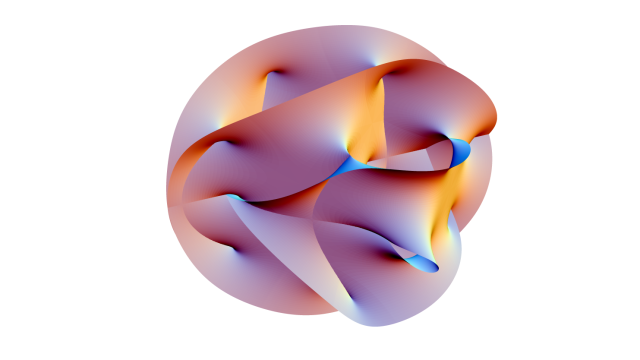String theory a beautiful, elegant piece of science which claims to unify all the forces in the Universe by representing tiny point-like particles as one-dimensional vibrating strings. It’s as clever as it is wacky but is — conveniently — untestable. Until, perhaps, now.
The problem is that string theory, sometimes referred to as the “theory of everything”, uses such extreme energy levels and minuscule physical dimensions — each string should be a quintillion times smaller than the already tiny hydrogen atom — that there’s no apparatus in existence capable of measuring whether it and its predictions are correct. That’s frustrating, but it also allows its advocates to doggedly pursue it, because there’s no need to abandon the idea as long as it could be correct.
But now, researchers from Towson University are claiming that incredibly precise measurements of the positions of solar-system bodies could provide a test capable of proving string theory right or wrong. Slight discrepancies between predictions made by general relativity and string theory, so they claim, could be determined if accurate enough measurements can be taken — crowning string theory victor or casting it as villain. The pair presented their work yesterday at the conference of American Astronomical Society in Washington, DC. Dr. James Overduin, one of the researchers, explains to PhysOrg:
“Scientists have joked about how string theory is promising…and always will be promising, for the lack of being able to test it. What we have identified is a straightforward method to detect cracks in general relativity that could be explained by string theory, with almost no strings attached.”
The test is actually a rather complex extension of Galileo’s fabled experiment, in which he dropped two balls of different weights from the Tower of Pisa. Later, Newton realised that all orbiting bodies are essentially running the same experiment themselves, continuously falling towards each other as they tumble through space.
Overduin’s research suggests that there may be tiny quirks in the way bodies actually orbit each other: departures from Kepler’s Third Law of planetary motion; drift from gravitational equilibrium zones known as Lagrange points; and oscillations in orbit distances due to acceleration toward a third body. To date, these feature have never been measured because the variations involved would be incredibly small.
But the team reckons there are bodies in the solar system where they should be measurable — the Saturnian moons Tethys and Dione, for instance. And if they can be measured, and they do exist, then string theory may yet have its day. For its proponents, it might be time to take a big old gulp. [PhysOrg]
Picture: Lunch
